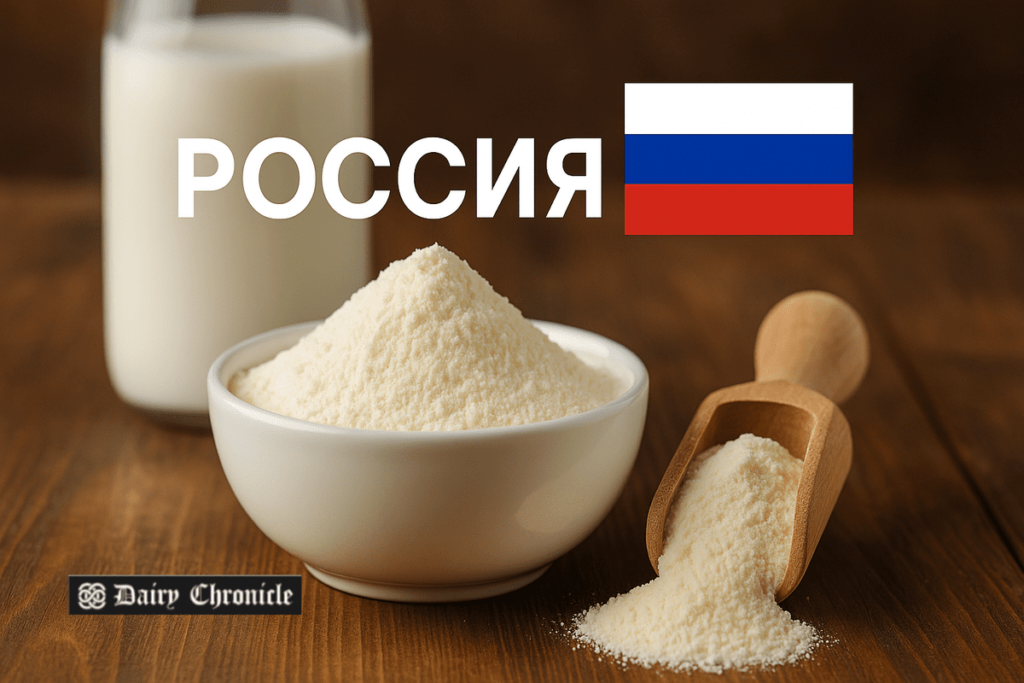Russia has significantly expanded its powdered milk export capacity, increasing exports fivefold over the last four years. The federal Agroexport Center, a government-backed agency promoting Russian agricultural exports, has projected even greater growth by 2030. Key production gains in January–February 2025, especially in skimmed milk powder, whole milk powder, and dry whey, reflect the country’s intensifying focus on international dairy markets. The Republic of Tatarstan, one of Russia’s key dairy-producing states, is central to these efforts, with state modernization programs supporting increased processing standards and capacity.
The federal Agroexport Center, a Russian government-backed organization dedicated to promoting agricultural exports, has reported a fivefold increase in the country’s powdered milk exports over the past four years. This surge marks a significant milestone in Russia’s growing ambitions to become a competitive force in the global dairy industry.
Between January and February 2025, Russia saw a notable uptick in the production of dry dairy products. Skimmed milk powder output increased by 8.6%, reaching 15.8 thousand tons, while whole milk powder production grew by 31.1%, totaling 13.4 thousand tons. Domestic consumption of whole milk powder also rose sharply, increasing by 52.2% in January alone. The production of dry whey climbed by 3.2%, amounting to 36.9 thousand tons.
These advancements are largely supported by state modernization initiatives aimed at upgrading dairy processing facilities across major dairy-producing regions such as the Republic of Tatarstan. Although not all processing plants have reached international standards, ongoing improvements have allowed Russia to broaden its export reach.
Russia’s main export destinations for powdered milk in 2024 included Kazakhstan (42%), Algeria (19%), and Armenia (9%). Additional volumes were shipped to Egypt, Saudi Arabia, and the United Arab Emirates, highlighting the country’s expanding presence in Africa and the Middle East.
According to the Agroexport Center, Russia’s powdered milk exports are projected to grow to 30–35 thousand tons per year by 2030, representing a 70% increase over 2023 levels. The estimated value of these exports is expected to reach between USD 70–75 million. Similarly, whey exports are forecasted to climb to 20 thousand tons, potentially generating revenues of up to USD 19 million.
On the global stage, Russia competes with established dairy exporters like New Zealand, the European Union, and Belarus. While New Zealand’s products enjoy a reputation for high quality, logistical constraints affect market accessibility. The EU continues to export to Asia, Africa, and the Middle East, but environmental regulations and quotas have begun to slow production.
With strategic state support and increasing demand in neighboring and emerging markets, Russia is positioning itself as a growing player in the global powdered dairy trade.
